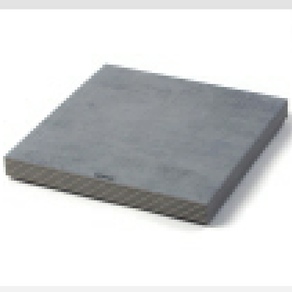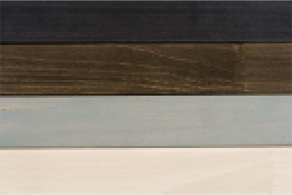


Ochrana osobných údajov © 2024 Zalan Schuster

Stands, mats, accessories:


Ceramic isolation platform
HiFi board, Vibration Isolation Platform for speakers, components.
Anti-
and with an anti-
Luxurious appearance, different color design and motif. The HiFi board can also carry
very heavy components or speakers. The standard load capacity is 50 kg, but you can
order with load capacity 50-
It will reduce unwanted sound resonances in the auditorium, furniture and other objects. The use of a HiFi board under the audio components can reduce or completely eliminate these resonances at higher volumes. In addition, it will improve the dynamics in the music and improve the soundstage of the sound. The sound perception is more balanced. You will have a better perception of deep tones.
width 45 cm x length 45 cm x 4.5 cm thickness and height 5.5 cm without wooden frame
width 49cm x length 49cm x 4.5cm thickness and height 5.5cm with wooden frame
On request, it is possible to produce another dimension.
249€/piece Price of version: Metro Basalto (grey) and Cozy Dark Brown (brown) without wood
399 €/piece Version price: Metro Basalto (grey), Cozy Dark Brown (brown), Concept black, Extra black in concrete design with wooden frame
Wooden frames can be black, ebony, gray or beech.
warranty: 2 years
Watch the video about the Ceramic Isolation Platform with English subtitles
Watch the video about the test with Charles Holub
The first video text:
Hello, I would like to introduce to you the ZS Acoustics Isolation Platform for speakers
and audio components. It provides a solid foundation for your speakers, reducing
unwanted sound resonances from the listening room, furniture, and other objects.
Using this HiFi boards under audio components can reduce or completely eliminate
these resonances, improving music dynamics and soundstage. You'll have a better sense
of deep tones, and the sound perception will be more balanced. The anti-
for your speakers, reducing
unwanted sound resonances from the listening room, furniture, and other objects.
Using this HiFi boards under audio components can reduce or completely eliminate
these resonances, improving music dynamics and soundstage. You'll have a better sense
of deep tones, and the sound perception will be more balanced. The anti-
Another advantage of these isolation ceramic platforms is their versatility. You can easily adjust the speaker placement for optimal listening. When you're not listening to music, you can easily move them closer to the wall to keep them out of the way.
The ceramic isolation platform has two significant benefits. Firstly, it provides a solid foundation under the speakers and the second is that it insulates from the floor.
A solid base is therefore necessary because the speaker moves back and forth due to the diaphragm moving back and forth. So he can't swing like that. Because when he does it, we will hear it in the sound that he is not playing well, he is not playing cleanly. That's why a solid foundation is important.
Secondly, it isolates the speakers from the floor, preventing vibrations from being transmitted into audio components, where they could affect the signal. Vibrations can also transfer into furniture and resonate within the room. I've experienced situations where furniture resonated at specific frequencies, producing unwanted noises.
Do vibrations not transfer through those feet? In my experience, they only help about
50% of the time. The floor still affects the sound. The best results I achieved were
with ZS Acoustics ceramic isolation platforms, even though cheaper Soundcare spike
feet also improved the sound. When I experimented with various feet for my speakers,
I found that even high-
In the apartment you see in the video, we were listening to music late at night.
Our neighbor, who lives two rooms away, came to complain that our music was disturbing
his sleep. After the installation of these isolation pads, our music no longer disturbed
him. The sound had transferred to the neighboring apartment through the iron-
Now, I'll show you how the ceramic pad isolates. (Show the video)
You can rent and try the isolation platform at your home to experience the subjective improvements it brings to your audio setup. You'll learn more about the subjective impression in the next video. For now, goodbye.
The second video text:
ZS Acoustics Ceramic Isolation Platform Test with Charles Holub
Watch the video to learn why it's important to place these ceramic isolation platforms under speakers and audio components, and what sound differences you can expect when using them.
In the video, you can hear for yourself the impact of vibrations on audio components
-
You will also find out the weight capacity of the ceramic isolation platforms and whether they can be modified in case you upgrade to heavier speakers or components in the future.
The video provides answers to questions like "Should I buy better speaker feets or opt for ceramic isolation platforms first and later purchase better feets?" and whether there is an acoustic connection in the wooden frame versions between the ceramic sheets, as well as whether isolation platforms make sense based on the type of flooring in your home.
Hello, Hi-
We tested the Ceramic Isolation Platform from ZS Acoustics and listened to various music. For example, Madonna's "This Used to Be My Playground," then "Espana" by producer Mike and Françoise Valentine, Chasing the Dragon label. The song "Bizet's Carmen, the Gypsy Song, Habanera."
Well, we started by not listening without them, but first with them. The sound was
very nice, the space in different songs had a very distinct depth, as for the right-
That's why I mentioned that this ceramic isolation platform belongs to the basics, as long as the acoustics are relatively good. We're not in a listening room, but in a living room where the acoustics are also treated partly, what you don't see on the back wall are the GIK Acoustics Monsters panels with scatter plate installed, on the left side there are two more panels on my side, on the other side is the kitchen, so there is a certain asymmetry, and many books also help, as you can see behind us, but it's not a listening room. The acoustics here are better than in a typical living room.
Yes, but such acoustic conditions have many listeners who listen to their equipment
in such living conditions, they don't have the opportunity for special rooms, listening
rooms, which they fine-
Many Hi-
I don't know how the others who were here before and those who will come after me
reacted, but for me, it was undoubtedly one of the most surprising results because
we rarely recorded such a significant difference. I can't remember repeating myself
that we recorded such a significant difference with some components. Just the possibility
that it is audible in normal conditions with minimal, well-
But most of the time, they're hidden. That's the problem. In this room, they're not hidden. The sound is reflected, it actually dampens it because it's more about dampening and partially diffusion because there is furniture here, but it helps a lot. They're not behind glass because that would make a fundamental difference, it used to be behind glass, but we removed it. Also, during the listening, we opened the cabinets that were closed to allow the books in them to complement the room's acoustics.
First of all, I noticed that they are framed in wood. Isn't there any connection between them? Is there no acoustic connection between the ceramics panels?
There is a separation. If you look closely at the ceramic isolation platform, there is a gap, there is no acoustic connection between the panels, and I paid attention to that. It would be a shame if there were an acoustic connection.
I noticed that when we removed the platform from under the speaker, it could easily be moved.
Yes, I intentionally made it like this so that it could be done this way, because many people have speakers in the corner or close to the wall to not interfere. When listening to music, you need to be able to easily move the speaker to the right place where the speaker sounds best.
Could you give us some technical information about how these feet and platform work?
They work best when there is a ceramic isolation platform underneath, because it separates the speaker from the floor, which can be any type of surface. I tested it on a floating floor, marmoleum, linoleum, all the way to a solid floor, including tiles and concrete. You could still hear the difference because the floor, in combination with the speaker, plays a role in the music. The platform separates it from the floor. Yes, it separates it, but not only that, it ensures that the speaker stands on solid footing. But where there were tiles, it was mechanically very solid, but you could still hear a difference, as the foundation was solid. But that's just part of making the speakers sound better.
Alright. I noticed that when you take them out, it's not necessarily the easiest components. Could you tell us how heavy it is, and what weight range it is designed for?
It weighs around 20 kg, but it can be made larger upon request. There's also a 60
centimeter version plus with a frame for larger speakers. Regarding weight capacity,
the standard version is designed for up to 50 kg, which is sufficient for most cases.
Above 50 kg, there is a second version, and the feet under the platform need to be
adjusted. There are versions for 50-
Can it be updated in a way?
Yes, it's as simple as the customer getting in touch and requesting an upgrade to a higher weight capacity. This is interesting because if you have 20 kg speakers now and plan to move up to 60 kg or 100 kg speakers, you don't need to replace the platform. It depends on the size of the speaker's base, the weight is not an issue.
Could you tell us something about the prices of the platforms so that audiophiles would know?
Of course, it costs €299 without a wooden frame, and with a wooden frame, it's €399
each. That's an interesting price. There is insulation on the wooden frame so as
not to short-
Can you tell us about the interaction with the feets?
The greatest potential of those feets can be achieved when the ceramic isolation
platform is under it, because when I tested it and took those stands with me to the
listener, I always got different results, and depending on what the floor was like,
the speakers and circumstances, sometimes very high-
Yes, that means it can be improved step by step, first cheaper feeds, then the platform, then more expensive feets, and that mutual combination is then optimal.
Exactly as you say. According to my experience, it is better to buy Soundcare feets, which are a few euros, buy a ceramic isolation platform, and if I want something better, buy better feets. That's the way it is. It's a better way than if I buy better, more expensive feets now and skip the ceramic isolation platform.
Yes, that was audible. That ceramic platform made a quite significant difference. I believe that. We haven't tested that now, but is there a version for components too?
Up to 50 kg, as I mentioned, the standard version is suitable for components. I also tested it, even though it doesn't make as big a difference as under the speakers, it still improves the sound quality in that direction. We also did tests with sensitive amplifiers, phono preamplifiers, or tube amplifiers. We did such a test that we shouted into those tubes, and you could hear the cry through the speaker as it transmitted. And into those transistors when you bang, it transmits the impact into the sound. That's also something people think isn't possible, the selection of those components, only for a turntable, at most for a CD player, but not for the amplifier and preamplifier.
The feedback interaction certainly exists.
It's important there, and even though, as I said, it improves less than under the speakers, the change is also audible there. The best thing is to put those components on the isolation platform and then on the floor. So thank you for coming, and see you for now. Goodbye!















| ZS Acoustics-Dynaudio Contour 20i SE Eng |
| ZS Acoustics-Dynaudio Contour 20i SE Hun |
| Dynaudio ZS-Acoustics Emit M30 Hun |
| Dynaudio ZS-Acoustics Emit M30 Eng |
| Dynaudio LYD-5 |
| Dynaudio LYD-7 |
| Dynaudio LYD-8 |
| Dynaudio BM6A |
| Dynaudio BM15A |
| Dynaudio Professional BM9S II |
| Dynaudio Professional BM14S II |
| Electrocompaniet-ZS Acoustics AW 600 Hun |
| NAD T 777 |
| NAD T 187 |
| NAD M 17 V2 |
| NAD T 787 |
| Meridian Audio Core 200 |
| Meridian G61R |
| Meridian G68 |
| Project 6 perspeX |
| Project 6 perspeX SP |
| Project RPM 9.2 Evolution |
| Project RPM 9.1 X |
| Project RPM 10.1 Evolution |
| Garrard 401 |
| JVC DLS-RS 1000 |
| JVC DLS-RS 2000 |
| JVC DLS-RS 3000 |
| Movie Palace Premium Acoustic plátna |
| Movie Palace Premium Curve plátna |
| Movie Palace Premium Multi plátna |
| Capitol Premium plátna |
| Coliseum Premium plátna |
| HiFiMAN HE 560 |
| HiFiMAN Edition X V2 |
| HiFiMAN HE 1000 V2 |
| HiFiMAN EF 5 |
| HiFiMAN EF 6 |
| OPPO PM-1 |
| OPPO HA-1 |
| Sennheiser HD 800 |
| ZS Acoustics Baritone Eng |
| AudioQuest JitterBug |
| AudioQuest Diamond USB |
| ZS Acoustics kerámia rezgéscsillapító platform |
| ZS Acoustics Ceramic Isolation Platform |
| Keces P6 |
| Keces P8 |
| Andrej Turok GuitArt CD |
| Andrej Turok Guitarius CD |
| Andrej Turok LUMINOUS CD |
| Andrej Turok Coffee time |
| Andrej Turok My Cosmology |
| Počúvanie hudby |
| Meranie akustiky |
| Meranie elektrosmogu |
| Účinky elektrosmogu |
| Elektrosmog a zdravie |
| Meranie elektrosmogu |
| ochrana proti elektrosm. |
| Ako hodnotiť zvuk? |
| Rozdiel vo zvuku medzi káblami |
| Hudba lieči |
| Z DÁVIDA GOLIÁŠ |
| Videá o akustike |
| Videá o elektrosmogu |
| Frekvenčná odozva v miestnosti a vonku |
| The difference in sound between cables |
| A kábelek közötti hangbeli különbség |
| Frequency response indoors and outdoors |
| Frekvenciaválasz bel- és kültéren |